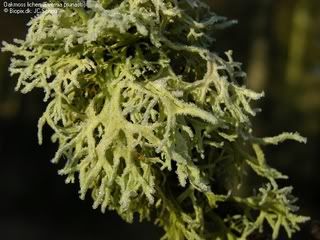There is a show on Greek TV called “Proof” in which famous journalist Nikos Evaggelatos reveals the scandals of various industries by having reporters infiltrate and report back in audio and video every gory detail to the shock, repulsion and wrath of the audience. Actual names are not revealed, no one is brought to task in practice and although there is an expert’s panel and a participating audience at the studio, no specific solution is proposed at the end of the show and the issues are left hanging there.
.bmp)
In more ways than I would be comfortable with,
the latest NZZ Folio article by Dr.Luca Turin, proclaiming “Perfumery, a hundred-year-old art, has taken a long time dying, but on January 1, 2010 it will be officially dead”, reminded me of that sensationalist approach. The issue has been
already addressed and the restrictions had been
warned of, premonitored and
fought against by several
writers and
activists. It’s not really news, especially to Turin-reading perfume enthusiasts, since he has been writing about it at every opportunity
for years. My dissenting voice is not disputing the seriousness of the latest reformulations in the industy (yes, they’re dire and largely
irrational) but an attempt to bring logic to what is apparently an impassioned subject that makes us momentarily lose our powers of reasoning.
A brief recap: Regulatory body
IFRA (International Fragance Association) regularly issues a catalogue of perfumery ingredients’ guidelines with which major manufacturing companies (ie.the companies who
make the juice, such as IFF, Givaudan, Takasago etc. as opposed to those who
commision it ~the Lauder Group, LVMH Group who owns Guerlain and Dior among others, the Gucci Group etc.) comply with, so as to minimise potential consumers’ complaints & lawsuits; a stance that has been sanctioned as law by the EU Commission at Brussels, which is the real “news”. Now let’s go back a few years: In Nov.2004 a NZZ Folio
Duftnote by Luca warns about the reformulation of one of Guerlain’s masterpieces (
Mitsouko). His newly-published blog "Perfume Notes" debuts in 2005, pronouncing "The End of Civilization as We Know it” concerning the changes at Guerlain: the perfume community sounds its barbaric yawp through the rooftops of the world and Guerlain PR Isabelle Rousseau's mail gets spammed. For many this was a first; oblivious to the inner workings of the industry, whatever doubt they had on the altered smell of their favourites was not directly attibuted to reformulation. But the approach created an unprecedented turmoil within the perfume community and it indirectly acted as a test of power. Although in mid-2007 the pneuma of the original
Mitsouko
was pronounced living on in the reformulated juice (by Edouard Fléchier) by Luca, it seems brought back to task just now in April 2009, along with other perfumes.
What changed in the interim? The perfume community came together tight as a fist (commendable), perfume blogging in general became a springboard for careers (predictable), Luca Turin close a book contract (desirable) and perfume companies have continued –or, should I say, escalated- reformulating their juices regardless on their merry way to the bank (lamentable). If anything the historical scope proves that forceful articles and community outcries do
not hold the power to inflict changes in the industry!
All written word in the public domain and transmitted through a network of interested parties should have a purpose. If the purpose is not informational journalism (the issue is well known and addressed in the
latest supplement of
Pefumes the Guide, while the IFRA amendments are
downloadable for all to see) or activism manifestation (to which we have already seen that the corporate world pays little attention to), I am at a loss on what purpose that latest article serves!
A couple of issues obscure the justified plea for change and the criticism on Dr.Rastogi: Demonization (environmentalist chemist Suresh Chandra Rastogi, Scientific Committee on Consumer Products, IFRA itself, the perfume companies), argumenting
ad hominem (“I am not disputing the veracity of Dr Rastogi’s research, though it makes mind-numbingly dull reading”), argumenting
ad populum ( “fragrance has no demonstrable benefit other than beauty” and “beauty cannot be measured” with which readers en masse agree), and of course first and foremost
argumentum ad verecundiam, aka appeal to authority ~ that of the author himself! Is
the biblical simile of The Man Who Cried Doom lost on everyone but me?
In talking about Dr.Rastogi’s work, Luca says “you discover some real but minor problem in a fragrance ingredient. Nice work and you can tell your family when you get home”.
That’s the main difference between Rastogi and Turin: reach! Dr.Turin has been given a public podium read by a specific niche of readership who cares
very much for those issues and who accepts
any such news with fear, panic and
wrath (“In another scientific paper titled “The Composition of fragrances is changing” Dr Rastogi analyses old and new perfumes and notes that
his work is having an effect”). Dr.Rastogi has not. For what is worth I can see that he is
Senior Reseach Scientist at the National Environmental Research Institute of the Ministry of the Environment at Roskilde, Denmark and he has
a solid body of publications on allergens research, so I deduce he is serious. In all probability nevertheless his self-defence will be conducted through closed doors of university laboratories and scientific publications which, as a fellow scientist of another field, I know are only read by a specific niche: namely, scientists in the field ~ergo not the perfume enthusiasts’ community. The fight is thus unequal and it feels like a test of power. I would hate to see it as a Philippic interpreted à la Jacqueline de Romilly (ie. a raison d 'être) and thus I am giving both Luca and Rastogi every benefit of a doubt till further notice.
 The 43rd IFRA amendment
The 43rd IFRA amendment includes several “threatening” essences: jasmine absolute (both sambac and grandiflorum), ylang ylang, heliotropin, frankincense, eugenol and isoeugenol (spicy notes)…. . Please note nevertheless that Restricted is not the same as Prohibited. Restricted means allowed to be used up to certain levels and under certain circumstances. Costus had no chance in any form (oil, absolute or concrete), nor does masoia bark for flavours; but neither does the very new Majantol (a quite new lily of the valley synthetic). Oakmoss/mousse de chêne however somehow might and we will talk about it and other ingredients in some length in the following post.
IFRA was imposing recommendations for a variety of compounds such as oakmoss for a while, the industry following them resulting in numerous reformulations across the brands for at least 10 years now. Thus, for most modern fragrances these standards are not a big issue.
The dream of bypassing the EU by making perfumes on non-EU soil however is futile: the EU cosmetics legislation would only move to the American FDA. It's all about economics and the location of the target market of any specific house. In the words of independent pefumer Andy Tauer:
“Who are the members of IFRA? You will see that the big industry is in there, as members, like IFF*. Thus, all regulations are basically influenced by the big industry, too. There seems to be a mutual interest (commission/big industry) and the entire process is driven by industry, too. I feel that the EU Commission is just proving once more that it does not really care about economic growth, about the citizens it's representing, or small and medium -sized enterprises ( SMEs) but rather plays its game with the big ones, meeting with the who is who; thus the smaller enterprises have to either accept what comes out of these dances or perish.” *{quote from IFRA page: Since the GA of October 17, 2007, companies may also become Direct Ordinary Members of IFRA"}.
It has to do with papework as well, because several cosmetics and toiletries are produced locally for tax reasons, so not all products of one brand are produced at one place.
IlseM points out
on the Perfume of Life board which is
ruffled:
“IFF is being sued by hundreds of microwave popcorn factory workers because the diacetyl in their butter flavorings caused those workers to contract the irreversible lung disease bronchiolitis obliterans. I remember when Consumer Reports tested fragrances for phthalates after they were supposedly removed from all fragrances. CR found them in many of those fragrances and even in ones where
the companies claimed never to have used pthalates. In a few cases the level was even higher than when testing was done before their removal! It's hard to believe that the fragrance industry is motivated by product safety concerns.”
But the perfume community itself has responsibilities too! When perfume writing broke into the Internet and Press scene in 2005 ~an epoch seemingly as far back as the Pleistocene for most people’s memories~ there was
heated discussion concerning the use or not of aromachemicals (ie.materials synthesized in the lab for use in perfumery) as opposed to natural ingredients. Authors breaking into the scene championed synthetics ~deeming them
no less important or more important than naturals. I distinctly remember people saying that it didn’t matter what their perfumes were composed of, “as long as they smelled good”. Those words are now coming to kick them in the butt in a not-as-nice way. Why the delayed outcry on the axing of several natural essences? We’re catered for with what we asked!
“Smelling good” is a relative term and perfumers
can create new compositions tapping as yet unknown resources and new frontiers -which might produce the classics of tomorrow; it would be both hypocritical and rushed on our part to en masse condemn everything that comes out of the labs of companies as an original composition complying to the newest regulations. After all,
some fragrances which have been deliberately constructed to bypass restrictions have already gained critical acclaim. Some, like
Futur by Piguet, have even been reworked with the help of Luca Turin himself! As mentioned by the president of Piguet, Joe Garces, on
Sniffapalooza magazine March 19th 2009:
"With the help and guidance of the most diverse fragrance critic from across the pond who loved “Futur” from its original launch, I have been fortunate to find the final road map with his guidance to the glamorous fragrance that once was. Because of the genius and passion of Luca Turin we will present the perfect “Futur”.)
Although restrictions have really gone over the edge and this is shared as a concern by all the perfumers with whom I have been in discussion, not everything is doom and gloom. In a
previous interview with Sandrine Videault, when asked about it, she told me new perfumers have no great difficulty working with the palette proposed, as they do not feel restraint in not being able to use what they have not worked with before. The creativity will change. On top of that, small niche firms can continue to use questionable ingredients in higher ratios than those complied with by the bigger firms (provided they can still source the supplies, which is the
main issue. To quote Tauer again: “The restrictions imposed by EU will kill many suppliers or essential oils and absolutes, as the longer the regulations remain, the more a burden. Thus, I am faced with a narrowing market for high quality essential oils”. Outlaw is like outlaw does! So the real problem is classics coming from big brands. But those have been already seriously altered, which is something we have been witnessing for decades now and reporting. Classics will remain a museum piece by their very evanescent nature; it’s inevitable, alas.
In the words of Jean Claude Ellena who is taking the modernist approach (and who makes interesting perfumes with the questionable ingredients, such as
Iso-E Super, at
well-below recommended ratio, bless his heart) “we can’t build the future only on history”.
If you need to do something about it you can mail Société Française des Parfumeurs: 36, rue du Parc de Clagny 78000 Versailles, France. Tél: (+33) 01 39 55 84 34 Fax : (+33) 01 39 55 73 64. Or the
Commission for Cosmetics and Legal devices, mail to:
staffdir@ec.europa.euBottom line, obituaries might be a little premature and indignation with no suggestions offered is akin to pissing in the wind.
©Elena Vosnaki for the Perfume Shrine.
.jpg)

.bmp)







.jpg)
.jpg)
.jpg)

.jpg)



